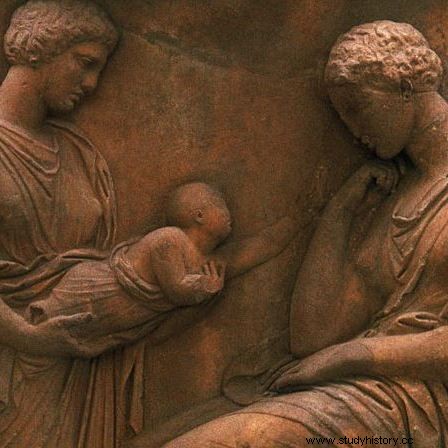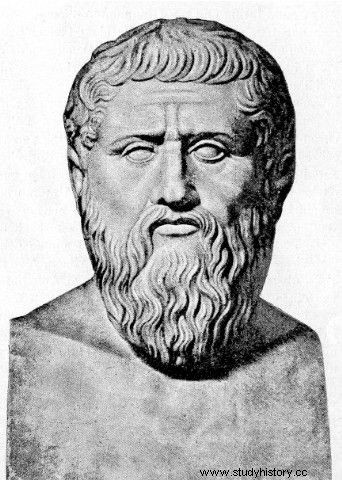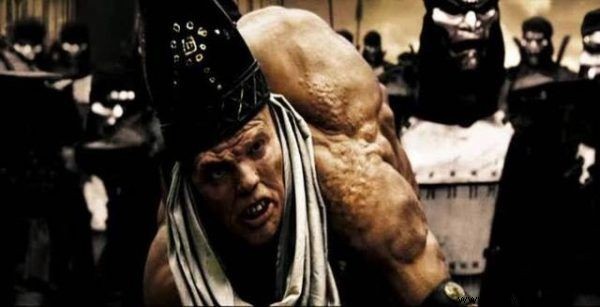The birth of a crippled child in ancient Greece and Rome was considered a divine curse and a harbinger of catastrophe. That is why the crippled kids were simply disposed of. Even an extra toe was a pretext for infanticide! Over time, however, the approach to the disabled began to change - although not necessarily for the better…
Probably everyone has heard about Spartan upbringing. In this ancient city, health and discipline among children and adolescents were crucial - sick or handicapped individuals had no right to life. After all, the state needed soldiers and athletes, not cripples…
However, not everyone is aware of the fact that these views were shared by almost all the inhabitants of the world at that time. For centuries, the ancient Greeks and Romans believed that a disabled newborn was the gods punishment for the sins of their ancestors - breaking an oath, robbing a temple or not paying an appropriate tribute. Handicapped people or people with developmental defects were traditionally got rid of because it was believed that they brought misfortune as freaks of nature. Gabriela and Jakub Nowiński report:
In ancient Greece, the abandonment, killing of newborns, was often required even by the state, and the philosophers Plato and Aristotle presented views of excluding the disabled from society. The Romans believed that the birth of a child with defects was a harbinger of an impending catastrophe.
Assisted natural selection
Historians see the sources of such a negative approach to disability in ancient culture. Both the Greeks and the Romans strove to create strong, healthy societies, and in such societies there was no room for "weak" individuals , deviating from the idealistic vision of man. The easiest way to do this was to eliminate any disabilities right from the outset - and therefore right after birth.

The ancient views on the disability of children chill the blood in our veins today
The sick, crippled or otherwise abnormal children were thus left in the forests for certain death, thrown from the mountains or rocks, or drowned. As described by the Nowińscy family:
In Greece, people with disabilities and animals with severe deformities were called a terrace. This term was used to denote mythological monsters. (…) The fate of such a child depended on the council of the elders, because a disabled child was considered the property of the state.
According to Plato, who saw eugenics as the only right way to create a utopian community, crippled or handicapped children caused a social deficit because they absorbed resources and worsened the quality of the population - so they should be disposed of. He postulated that citizens who "have poor bodies will be allowed to die, and whose souls are of evil nature and incurable, the judges will condemn them to death." Aristotle called for similar actions, writing:"With regard to the removal or rearing of newborns, there should be a law not to raise any disabled child."

Also, great philosophers such as Plato believed that there is no place for disabled people in society
The Romans had a slightly different motivation for infanticide - although in the end the effect was the same. They treated the birth of a deformed newborn as a symbol of a catastrophe, so they preferred to get rid of the threat in advance ... By law, an infant diagnosed with blindness or developmental defects had to be sacrificed before the age of three months. An alternative, milder version involved tossing a crippled child to a stranger.
Ancient human zoo
With the development of medicine and knowledge of human anatomy, the attitude to "anomalies" began to change - the fear of catastrophe or punishment from the gods turned into a morbid fascination. In the times of the empire, "monsters" (as handicapped people were called) were not so systematically disposed of. Philippe Charlier explains:
In the era of the Roman Empire, they became a symbol of prestige and entertainment. In this new chronological and cultural context, it was believed that whoever owned the "monster" had a natural curiosity, and therefore a valuable asset. In Rome, there was a real "monster fair" where people with developmental disabilities were paid exorbitant sums.
It is also possible that such "acquisitions" were later crossed to obtain even more "interesting" deformations. This is evidenced by finds in a cemetery between Rome and Naples, near Lucreziae Romanae, where archaeologists discovered numerous remains of deformed slaves.

Efialtes - still from the movie "300"
The more affluent citizens of the empire accumulated substantial collections of "monsters", not much different from human zoos and freak shows popular in Europe and the USA at the turn of the 19th and 20th centuries. Ancient "freaks" were forced to entertain guests at famous Roman feasts. In the pursuit of the rarest "monster", even the mutilation of disabled people considered… not ugly enough.
After their death, the remains of people who were followed were preserved in honey or their skeletons had been prepared and displayed as a macabre attraction to the public. Such practices are described, among others, by Pliny the Elder in his Natural History:
Under Emperor Augustus there lived two men who were half a foot taller, and whose bodies for this oddity were kept in a tomb in the Salustian gardens. Their names are:Posio and Sekundylla. (...) That Maniusz Maximus and M. Tulliusz, Roman knights, two qubitus [one qubitus, or a cubit, was about 50 cm - ed. ed.] they had only heights, says M. Warro, and I myself saw them preserved in their graves.
What about those who couldn't afford to buy a "monster"? Well, they had to settle for clay "reproductions". And since sculptors sometimes let their imagination run wild, if they were to rely solely on their works, one might think that ancient Rome, after centuries of "assisted natural selection", became the cradle of deformation ...
Bibliography:
- Aristotle, Nicomachean Ethics, PWN 2007.
- P. Charlier, What the Dead Teach Us. Pathologist on the trail of the mysteries of history, Esprit 2015.
- G. and J. Nowiński, Disability in ancient times, "Medical Review of the University of Rzeszów and the National Medicines Institute in Warsaw", 1 (2014), pp. 119–127.
- Plato, State, Library of Classical Philosophy. AKME Publishing House 1991.
410. - Pliny the Elder, Natural History, VII, 16, Józef Łukaszewicz's Bookshop and Printing House 1845.
